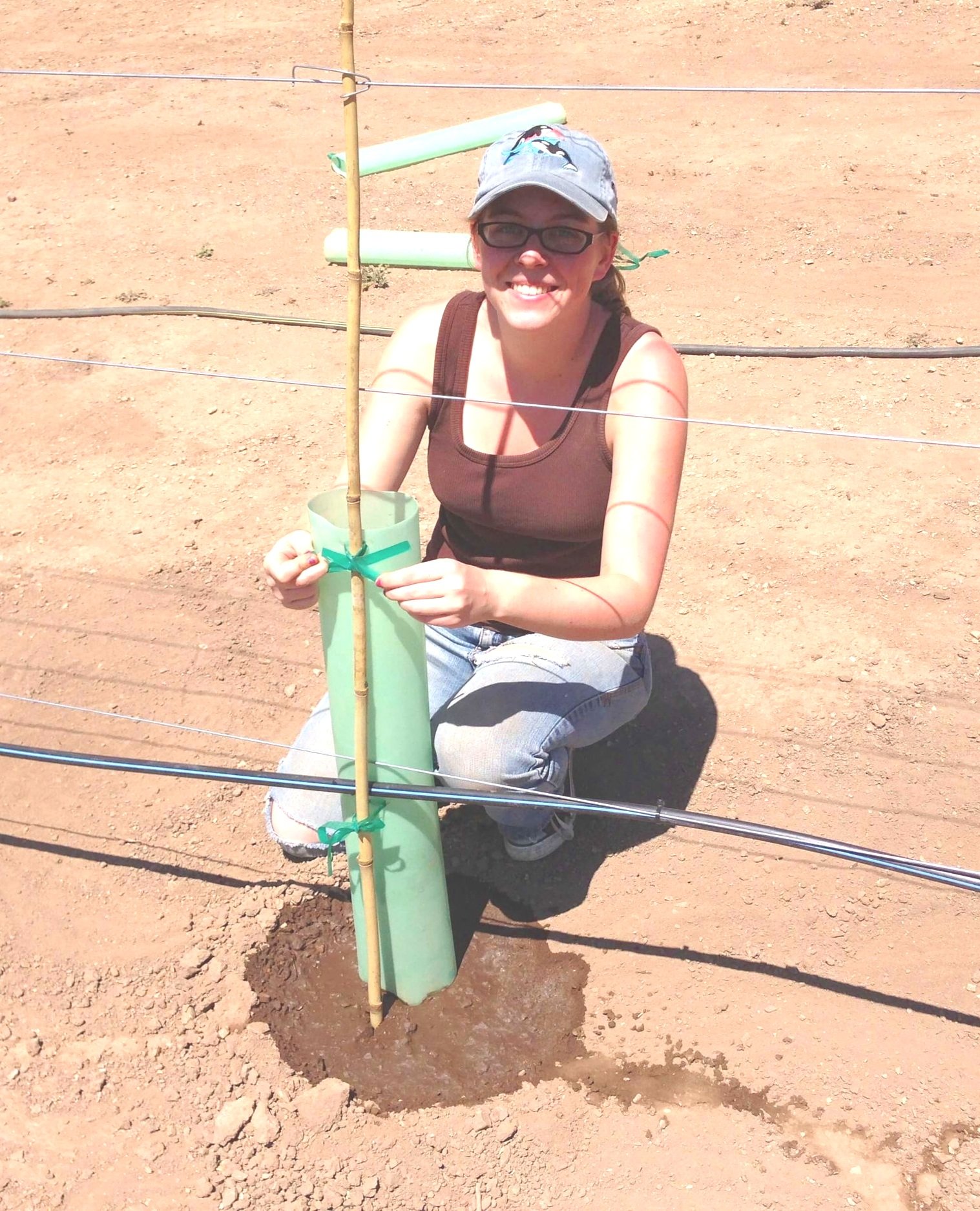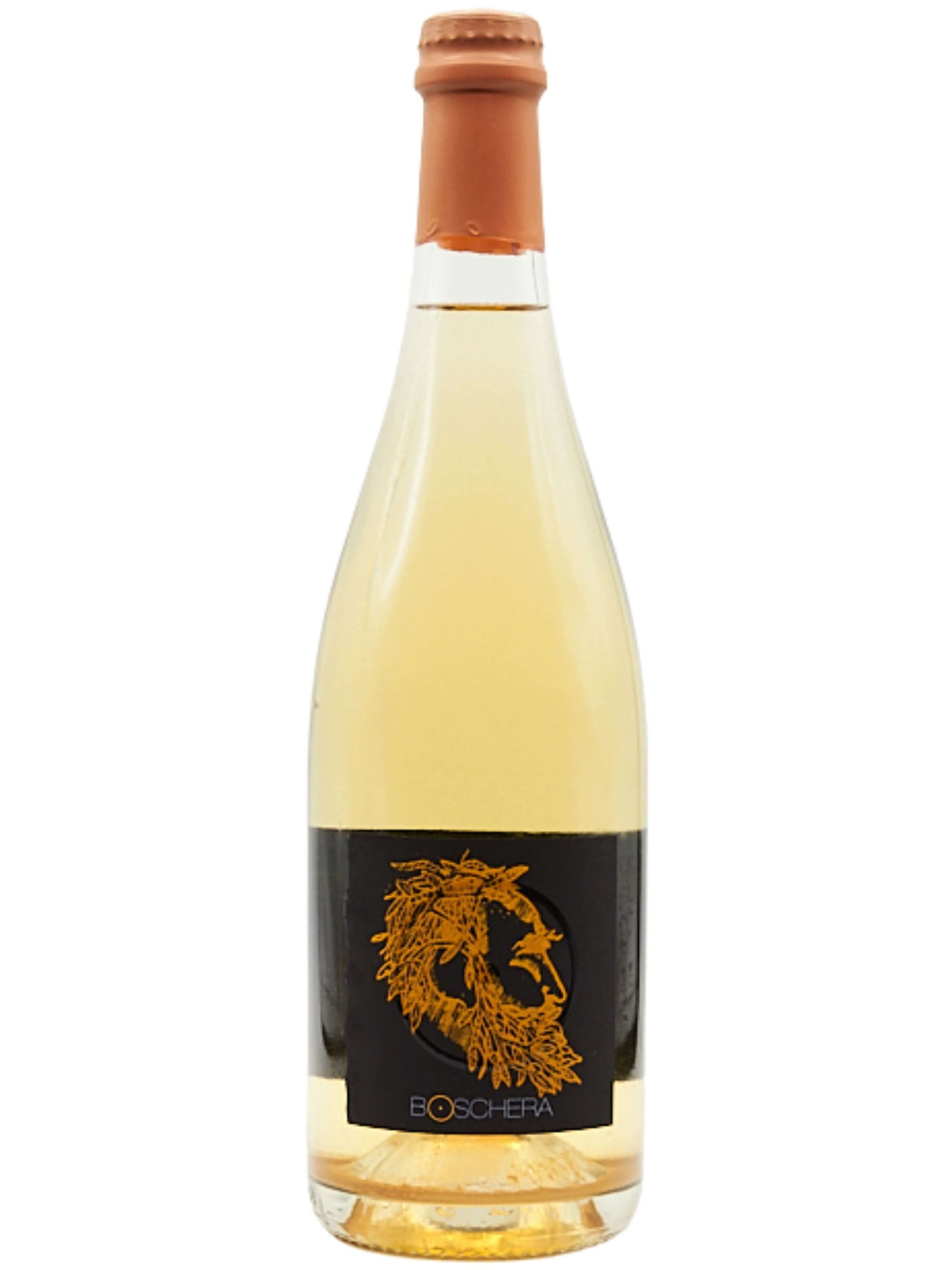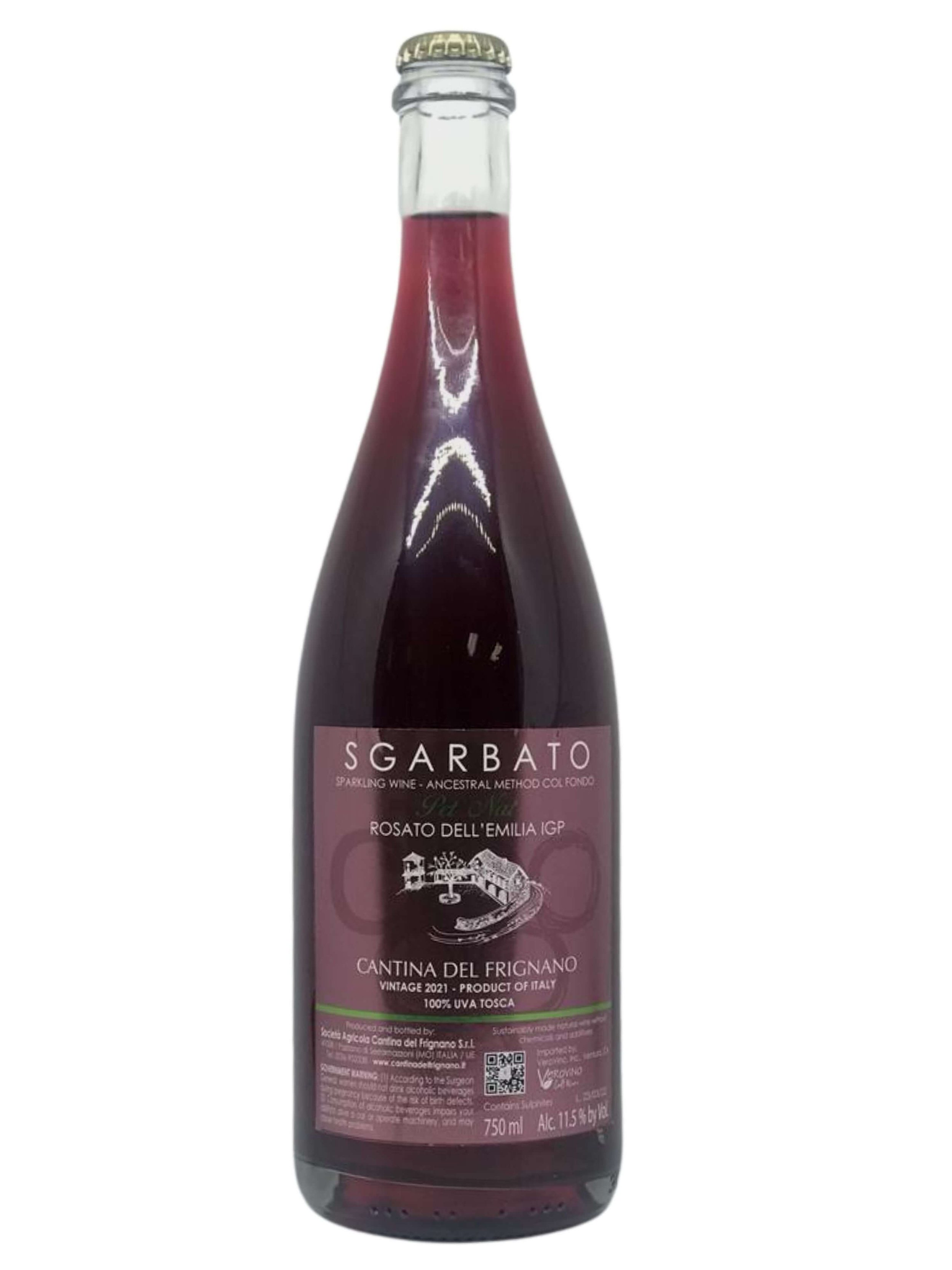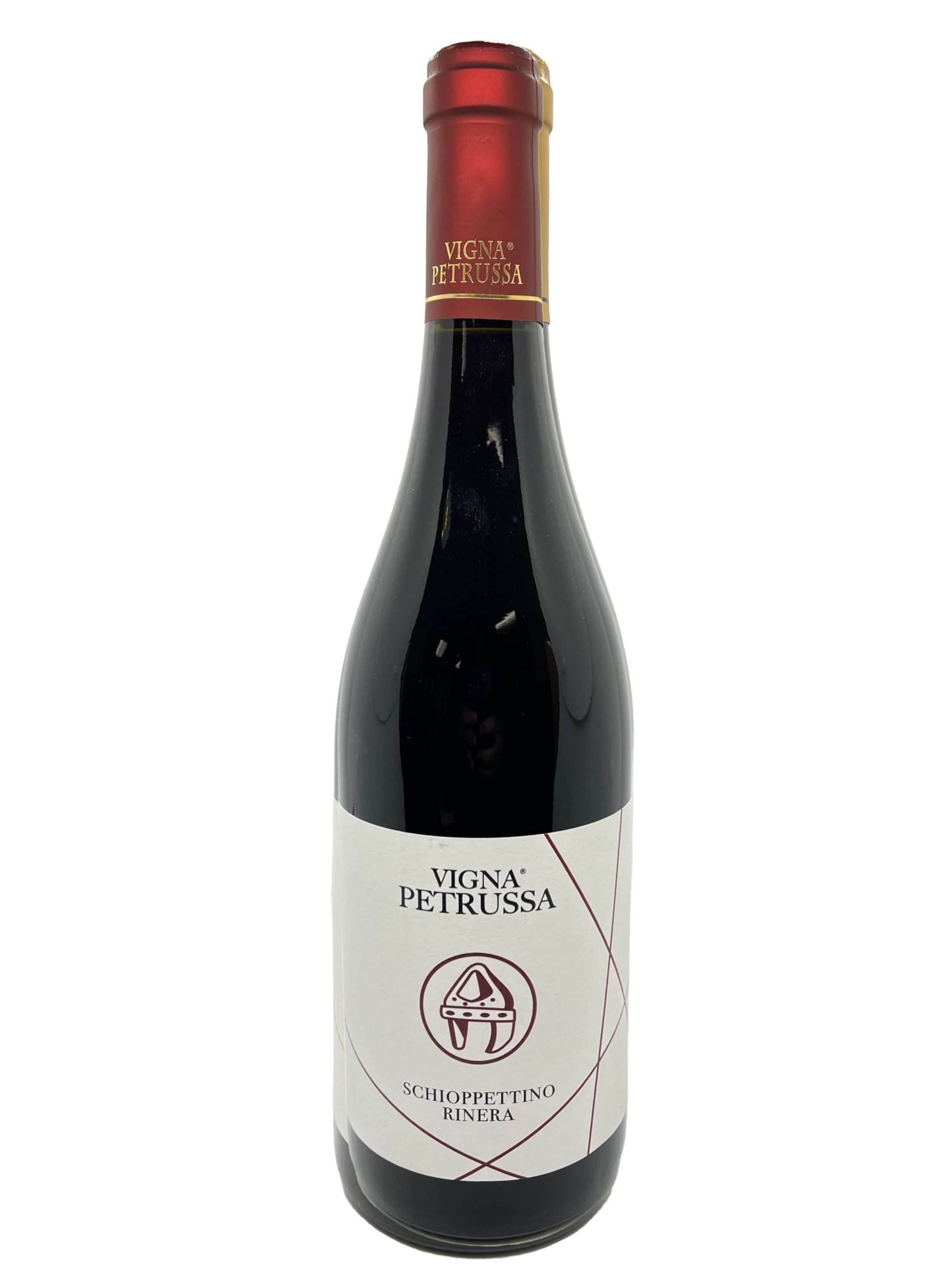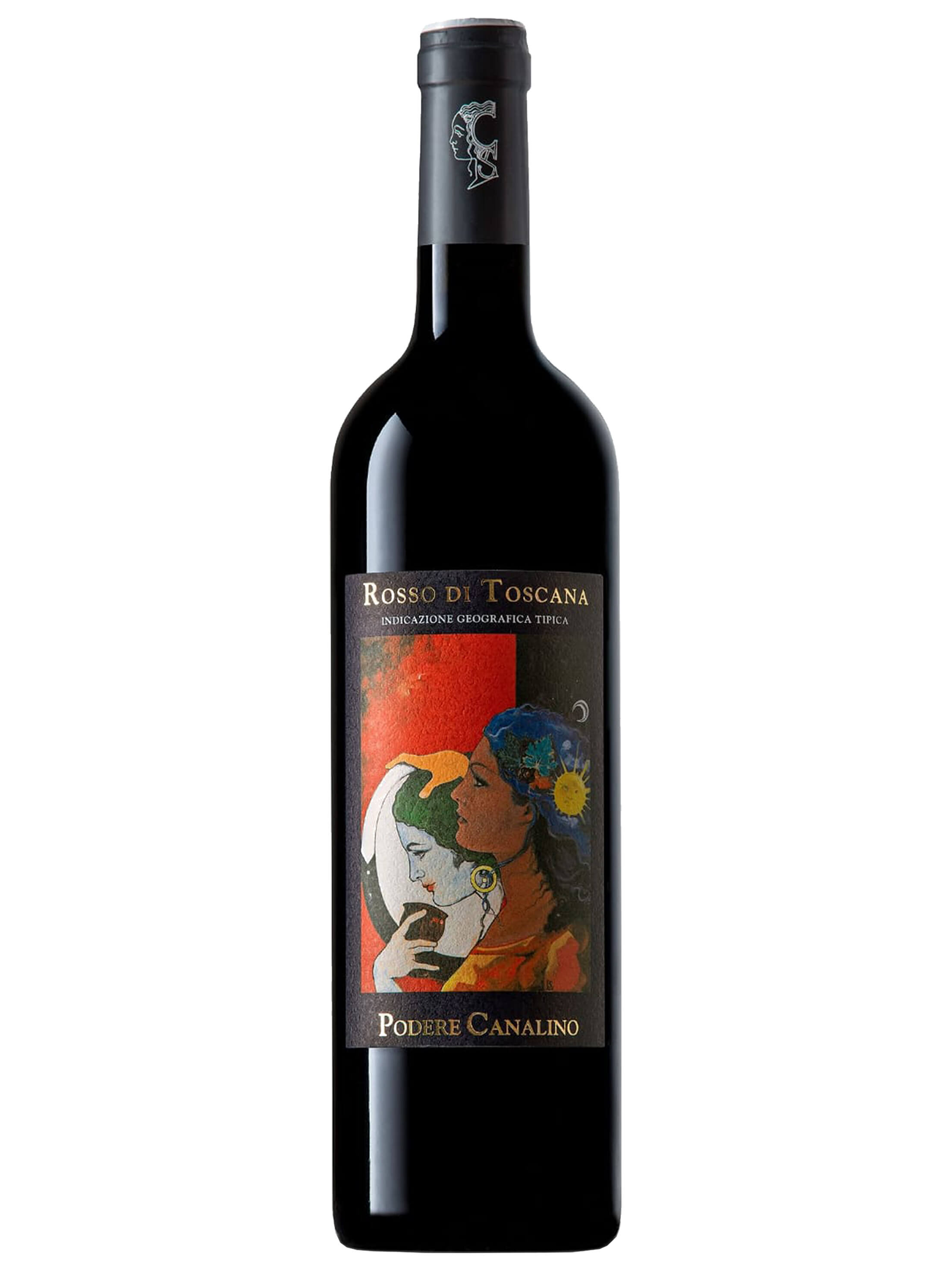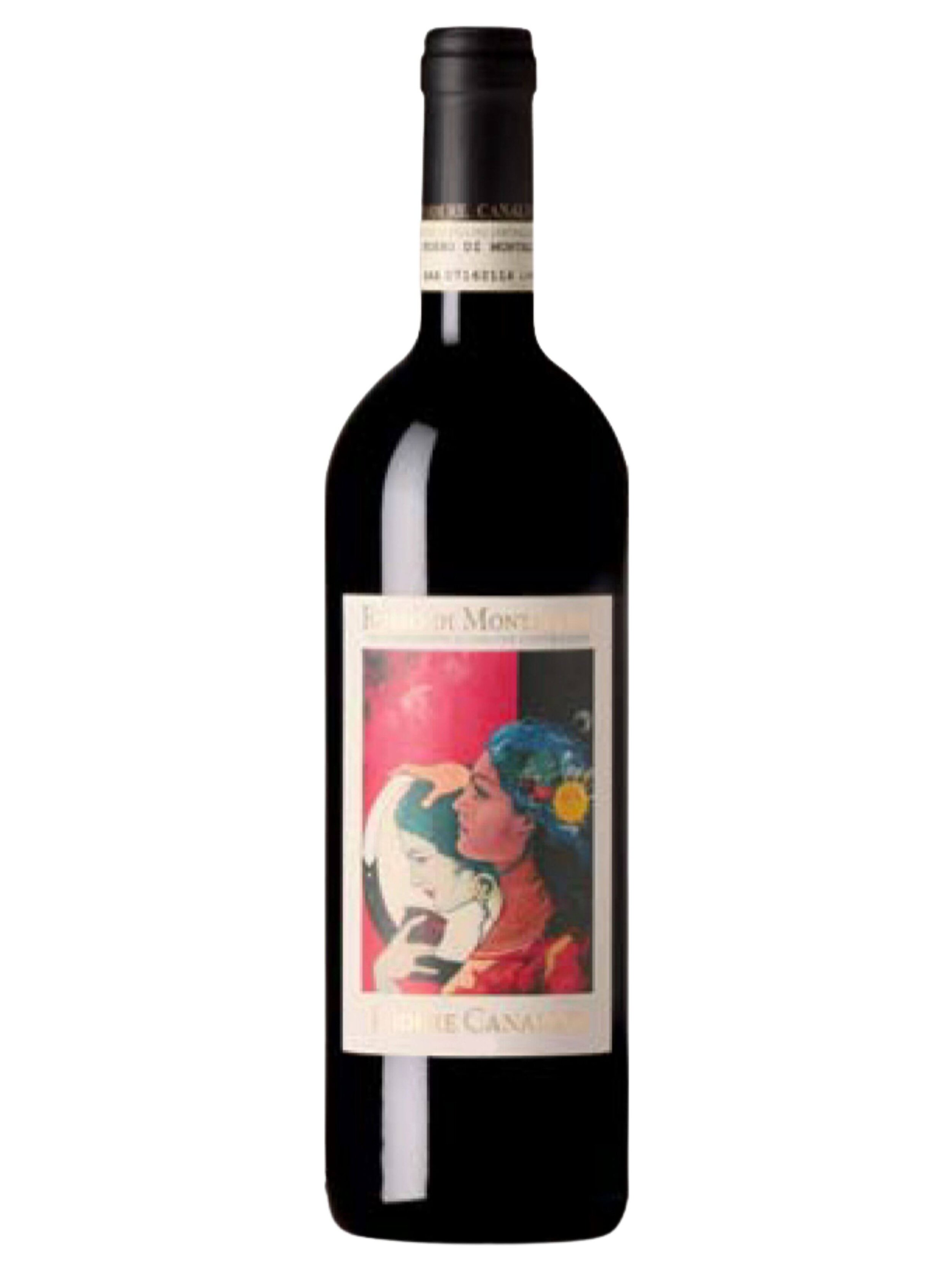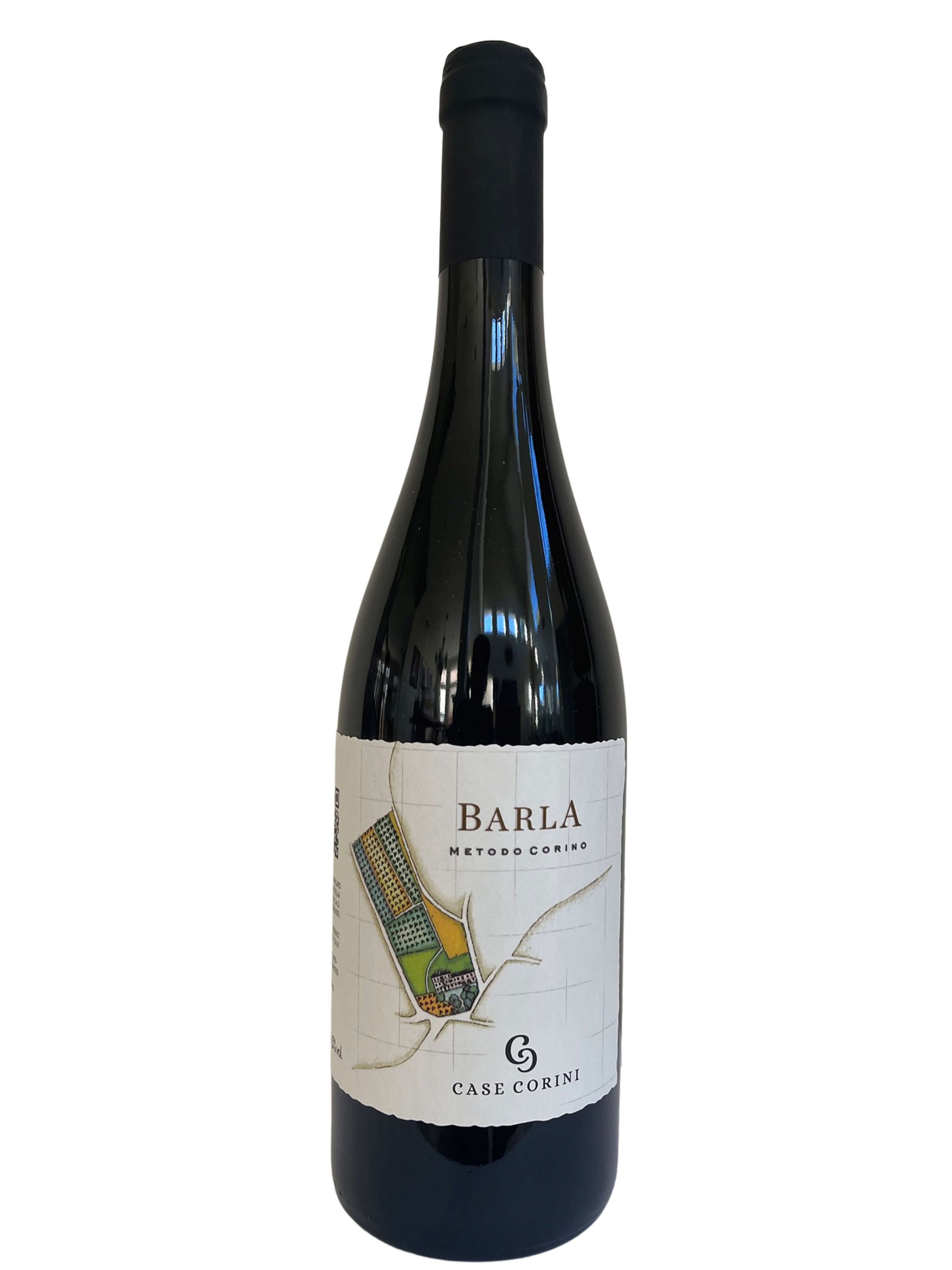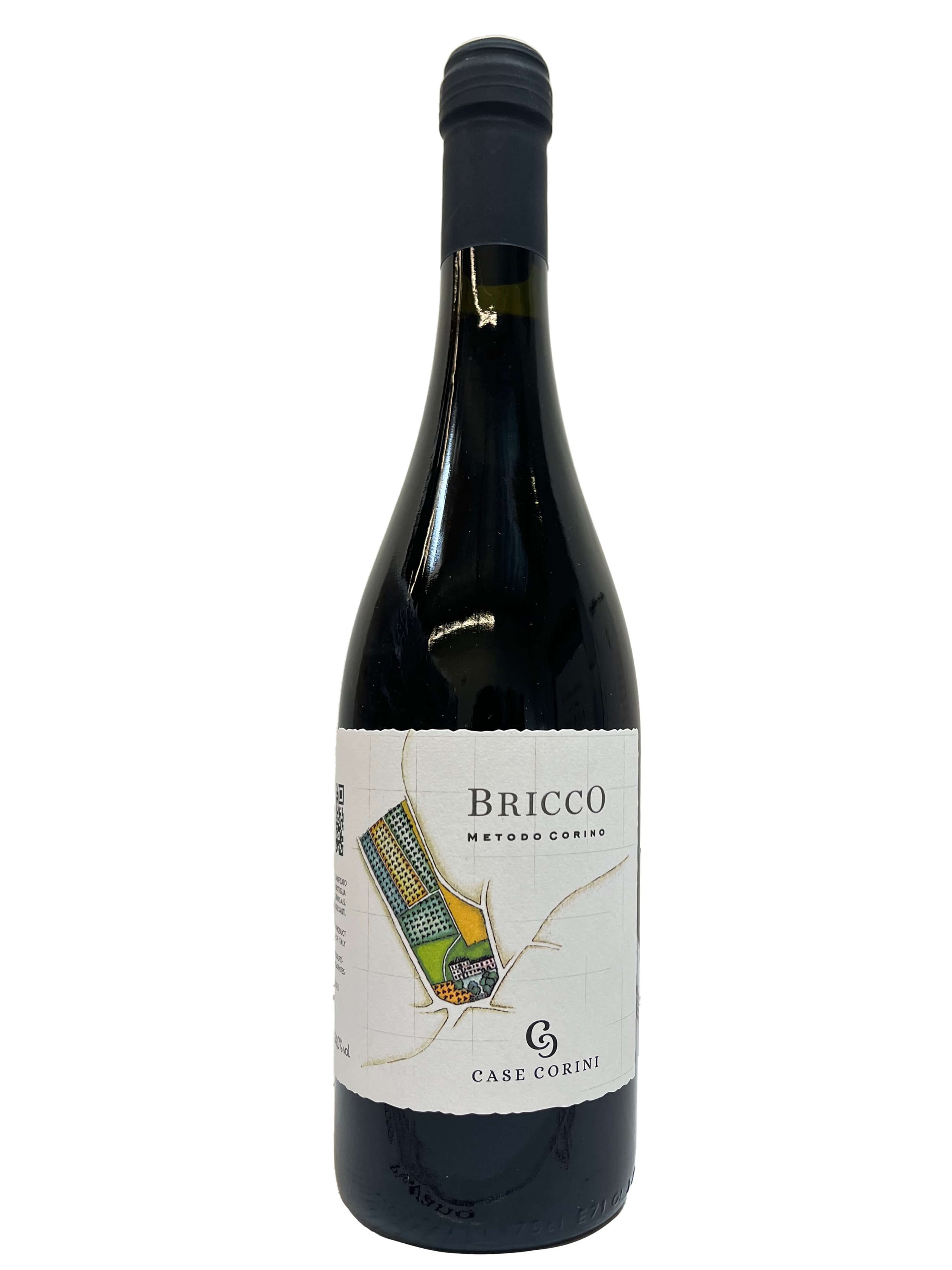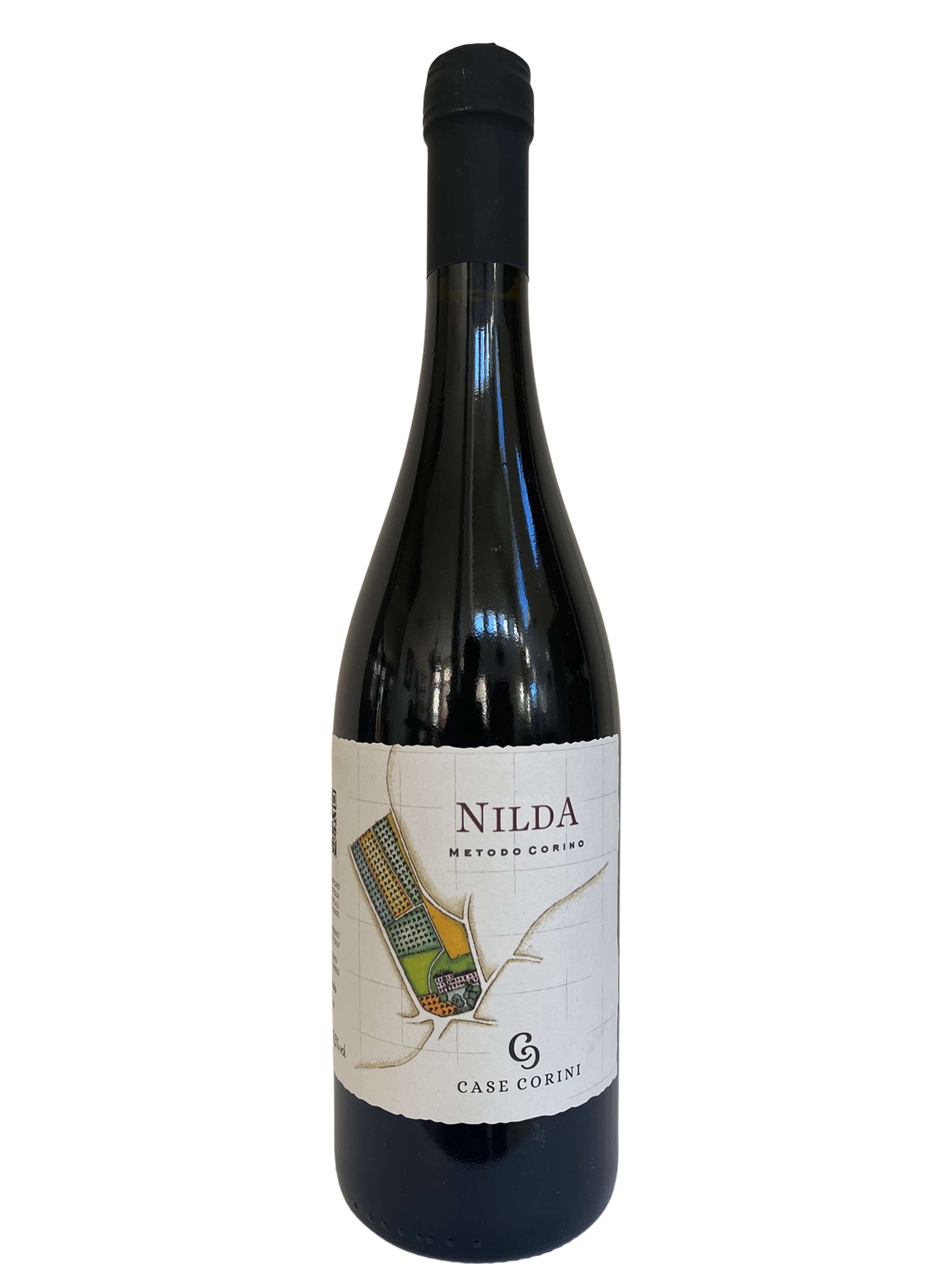Down to the Roots of the Vineyard
Who is not awed by a vineyard? It brings us to a bucolic state, capturing our eye and our emotions which then transport our minds to a happy place. You don’t even have to be a wine lover to appreciate the beauty of a vineyard.
But many don’t stop to think how those vines came to be: from the roots up. After all, it’s not as if one can strew seeds on the ground and a vineyard pops up. It actually can take years of careful planning and tending to plant, grow, and make flourish those vineyards.
In this article, we start from the way beginning of a vineyard and look at the most basic building blocks of a vine.
Winemaker Guido Corino, among his family’s old vineyards at Case Corini, explaining their winery’s grafting processes.
The Pieces of the Vineyard Puzzle
The core of a vineyard, the individual vines, are a puzzle of smaller pieces that quite literally meld together to form the final picture and living being that will go on to produce the fruit that creates the fascinating beverage, wine. In order to better understand how these pieces fit together, we’ll layout the individual pieces that go into the the larger picture of the grapevine puzzle.
First, just to clarify: a grape variety is what we classically think of when we talk about wine (such as merlot, cabernet sauvignon, chardonnay, etc.) and these are part of the grape species “vitis vinifera”, referred to as the “common grape vine” that originated in Eurasia. There are other species, such as “vitis labrusca”, the wild grape vine that makes Lambrusco wines as well as many different North American species. For the purposes of this article, we are focusing on vineyards and grapes that we refer that are part of the vitis vinifera species.
Phylloxera
One of the greatest catastrophes to the wine industry over the past 200 years was as a threat to the foundation of a vineyard: its roots. And it came in the form of a small, unassuming bug called phylloxera. Native to North America, the pest was introduced to European vineyards in the 19th century causing massive destruction and nearly destroying the vineyards of Europe.
An exhibition of vines from Mont Blanc that are still on their original rootstocks, too high up for phylloxera.
The pest partially lives underground, feeding off the tender roots of the grapevine. As phylloxera spread around Europe in the late 1800s into the mid 1900s, winegrowers observed how vitis vinifera succumbed to this damage, bringing on infections and bacteria that entered into the vine’s system which sickened and eventually killed the vine.
Some places are able to naturally resist the bug, like where they have types of soils that do not allow phylloxera to move freely such as sandy soils in Chile and Argentina. Climate also plays an important role: colder wine climates can resist the spread of the phylloxera bug, which does not thrive in cooler temperatures. These can be places in high elevations, such as the cold foothills of Mont Blanc, where pylloxera never arrived: to this day, you can still find vineyards with vines on original vitis vinifera roots.
However, for those areas that are susceptible to phylloxera, which is the majority of winemaking regions, once the spread of phylloxera gets into a vineyard, nothing can stop it. Most European farms were defenseless as this “mysterious” blight began killing off vineyards in the second half of the 1800s, and continued to move and spread throughout the lands. Many grape varieties were completely wiped out, nonexistent even to today. When vineyards were eventually replanted, farmers realized they could make more money by cultivating “more popular” grapes, especially international varieties. As farmers jumped on the bag wagon and took the opportunity of replanting dead vineyards with mainstream grape varieties, many native varieties across Europe became lost to time.
Thanks to heroic efforts of today’s passionate wine farmers, like Irene Balim rallying behind the “lost” tosca grape, Hilde Petrussa getting schioppettino back on the Italian wine map and Eros Zanon getting elevating the extremely rare boschera grape, these old native grapes are being saved one by one. Yet, still, to say that phylloxera changed the face of old world wine is a gross understatement: it didn’t just change it, it caused complete reinvention.
But how were the farmers finally able to combat phylloxera and retake their vineyards? They discovered the bug’s weakness: American rootstocks.
Rootstocks
At its core, the rootstock is just that, the roots of the vine. Usually the rootstock also includes a small part of the trunk of the vine, where the roots grow out of the ground and form the large, thick permanent trunk of the vine. These roots can reach deep into the soil and ground, sometimes meters, and help with the vine’s uptake of water and nutrients. As well, they serve as the anchor for the vine; holding it fast and firm in the ground.
Jacqueline of Ojai Pacific View planting her family vineyard’s newly bench grafted dolcetto vines.
A wine farmer can choose between different rootstocks from which to begin the vineyard creation. Going back to phylloxera, rootstocks are a crucial part to a farmer’s defense against the bug. You see, being a North American pest, the North American grapevine species, the “non” vitis vinifera grape producing vines, have unique defenses against phylloxera. This is because:
first, the vine is able to quickly seal off the wounds caused by the bugs’ feeding to prevent the sickening infections;
secondly, the roots produce a unique sap that clogs and chokes the phylloxera as they chew through it.
In short, the North American vine, evolves with the pest and builds defenses against it, that the European-based vitis vinifera simply didn’t have.
Different rootstocks have different tolerances to vineyard climatic conditions such as drainage or drought conditions, as well as predispositions for certain soil types and the depth that the roots will go for water. This meansthat when a farmer plants his vineyard and chooses his American rootstock there are different options available based upon their needs. As owner of Ojai Pacific View, Patti Mitchell, explains, “When we started the process of planting our vineyard, a local wine farmer came out to our land and had a look around, did soils and chemical analysis and suggested a rootstock for us to order from the nursery that would grow well on the land.”
The issue with these North American varieties is that most of the wine grapes are not as adapted to winemaking and compelling as a wine as vitis vinifera grapes. Grapes that come from 100% of these North American species simply do not make the wines we know and love. So what is a farmer to do? Make less wine just to stave off phylloxera?… We hope not!… So, that is where our next puzzle piece comes in.
Clones
It has become common knowledge throughout the wine world that grape vines are not created by simply planting a seed, but rather by taking a cutting of a pre-existing vine and using that to to create a new, genetically identical vine. This is done for several reasons, such as so that the wine grape varieties maintain similar flavors and aromas across time, vineyards, and countries. However, mutations occasionally still happen, leaving us with the same variety, but with a mutant twist. When positive “twists” are observed, they can continue to propagate, thus, creating a new line of the same variety, or what is known as a clone.
These clones are part of the variety piece of the puzzle: they are the green part of the vine that produces the tendrils, grapes, shoots, and leaves.
Different varieties can have many different clones, with some like sangiovese having over 100 different ones. While they are all technically “sangiovese” or other varieties, they have slight differences either of the plant or grape itself and in the wines the specific clone produces.
As with rootstocks, having different clones can provide farmers with unique characteristics better suited for a particular location or style of winemaking, as Canalino winemaker, Alberto Pagliatini, explained to us with a diagram of how he selected a specific sangiovese clone to use to make his Brunello di Montalcino, Rosso di Montalcino, and Rosso di Toscana. Some clones are more vigorous and some less leafy. Others give off big berries vs smaller berries. It is a winemaker’s choice which clones can give them the best benefits.
It is worth noting that if these changes are not held in check and allowed to continue to mutate, they can change so much that an entirely new variety will be declared, as was the case with the “Pinots” where the ancient grape Pinot mutated enough to eventually turn into pinot noir, pinot blanc, pinot gris, and meunier. However, again for the scope of this article, let’s assume that we are discussing clones that remain close enough to the genetic center point of the variety to be considered the same variety.
The Solution: Grafting
Ok, so let’s say that a farmer has picked the best rootstock for their soil, to prevent phylloxera and give the strongest vines. They have also selected a preferred clone of their chosen variety that will give them the best fruit. But how exactly does a farmer take a root in one hand, a clone cutting in another, and from these two things, make a whole vine plant, let alone a vineyard, out of it?
The easiest way for farmers to make this happen and get to pick the best rootstock and best clone for their needs is via grafting. Through grafting, a rootstock and a cutting are “stuck together”, literally, until they grow into each other and become one single organism. When this happens, however, they still remain separate entities to a certain extent, with the roots maintaining their benefits and the clone producing the desired wine grape. This grafting can be obtained in two main methods: bench grafting or head grafting.
For example, Patti Mitchell of Ojai Pacific View, who we spoke about earlier, chose to bench graft. Ordering a dolcetto clone from Italy, and selecting her rootstock in Northern California, a local nursery did the tricky business of grafting the clone onto the rootstock, They then sent Patti 200 ready to plant baby vines.
As any farmer or gardener will tell you, the planting and growing must be done with care. Then, the vines won’t really produce “good” grapes for at least a few years, hence why Ojai Pacific View didn’t produce their first vintage until 2017 even though their vines were planted in 2012.
However, in certain cases, a winery might choose instead to perform head grafting. This is where the graft occurs in the vineyard itself. The old vine is truncated and cut off partly into it’s trunk, then the new cutting or clone is stitched onto the well established rootstock. This has the benefit that with the large, well established root system, the grapes produced that year from the new vine are much more suitable quickly for winemaking. Many winemakers will use this to quickly flip a vineyard from one variety to another without completely ripping out, replanting, then waiting several years for the vines to take hold; in some cases the change can even happen from one year to the next.
Another reason that this a winemaker might choose to graft vines in the vineyard itself is because, as regenerative agriculture and natural wine pioneers, like Lorenzo Corino of Case Corini say, this can help the roots create living memory and adapt to the soil, climate, and terroir of a vineyard before beginning to produce grapes. As 6th generation winemaker Guido Corino explained to us, they plant the wild vine, or the rootstock, they want and let it grow for a few years. When it is ready, they cut it back to just the trunk, and graft on their desired grape clone. This way, the vine has a chance to grow without the stress of harvest as the vine adapts properly and learns the terroir.
What is important, however, is that no matter how or when a farmer grafts vines, they have done the research to understand which benefits and characteristics they personally need and want from both their rootstock and cutting. It takes time and passion for them to learn what is necessary, and to care enough to research, and not just slam any old vine in the ground, hoping something good can grow.
Tasting the Vineyard
Guido Corino showing us where exactly one can see on the vine where the graft took place.
That is exactly why, here at Vero, we find it very important that when we vet our producers and select the wines we import in, we have discussions with them regarding things such as native yeast fermentation, organic or sustainable farming practices, and how and why they planted their vineyards. This helps understand the people, terroir, and passion from which a wine is derived, making it just that much more special and unique.
We sell these farm to glass wines and olive oils we have discovered to businesses and consumers across the US:
If you are a distributor reach out to us introduce our highly curated portfolio of one of a kind small production wines to your state.
We sell to wine stores and restaurants in certain states - contact us to learn more.
If our farm crafted natural wines and olive oils are not in your local shop or restaurant, buy wine online here, and we’ll ship it to you, including wine gifts.
We also have an award winning wine club for true wine explorers that are seeking to continually discover unique, sustainable and authentic small production wines they never had. These are wines selected by our sommeliers and curated for each box.
We do corporate gifts and sommelier guided wine tastings. Email us and we’ll tailor unique and sustainable corporate gift ideas.



